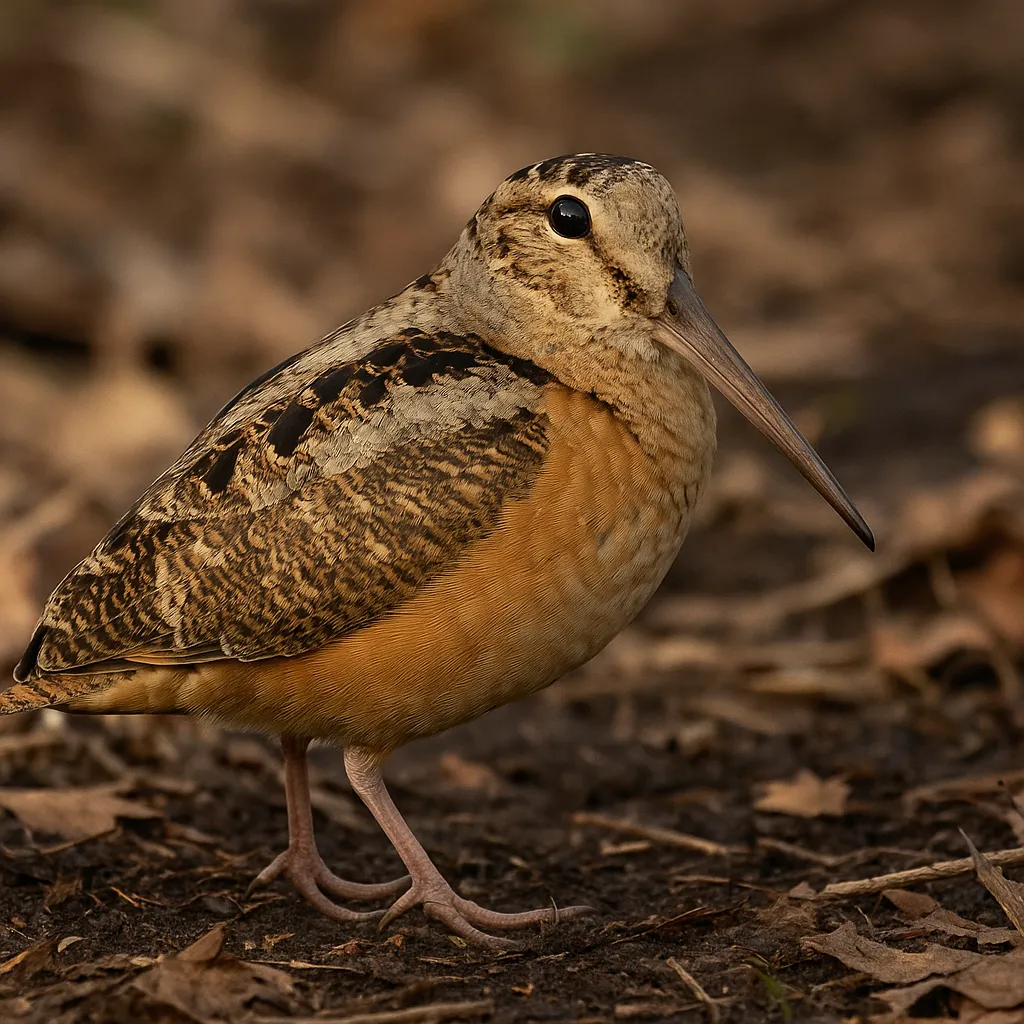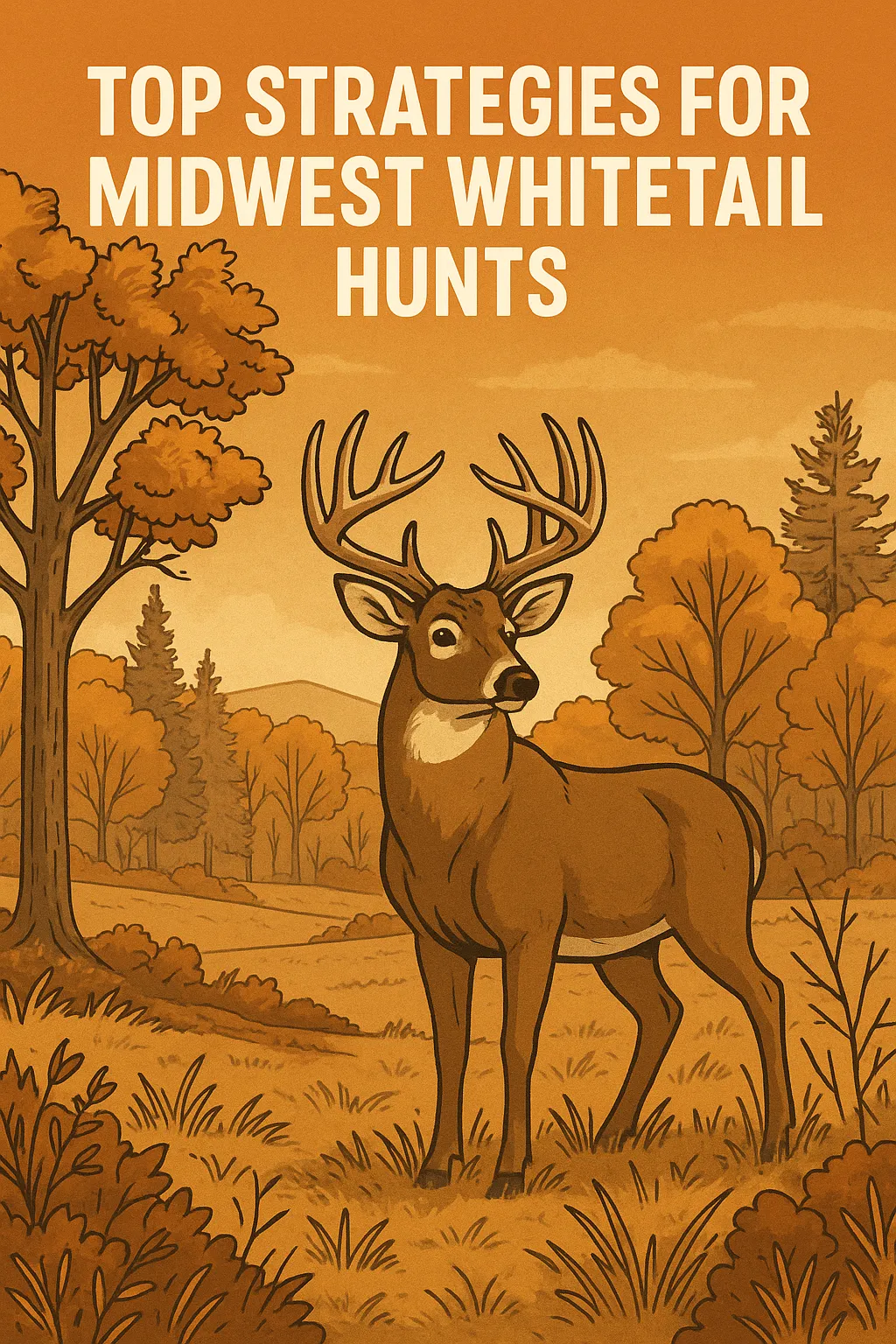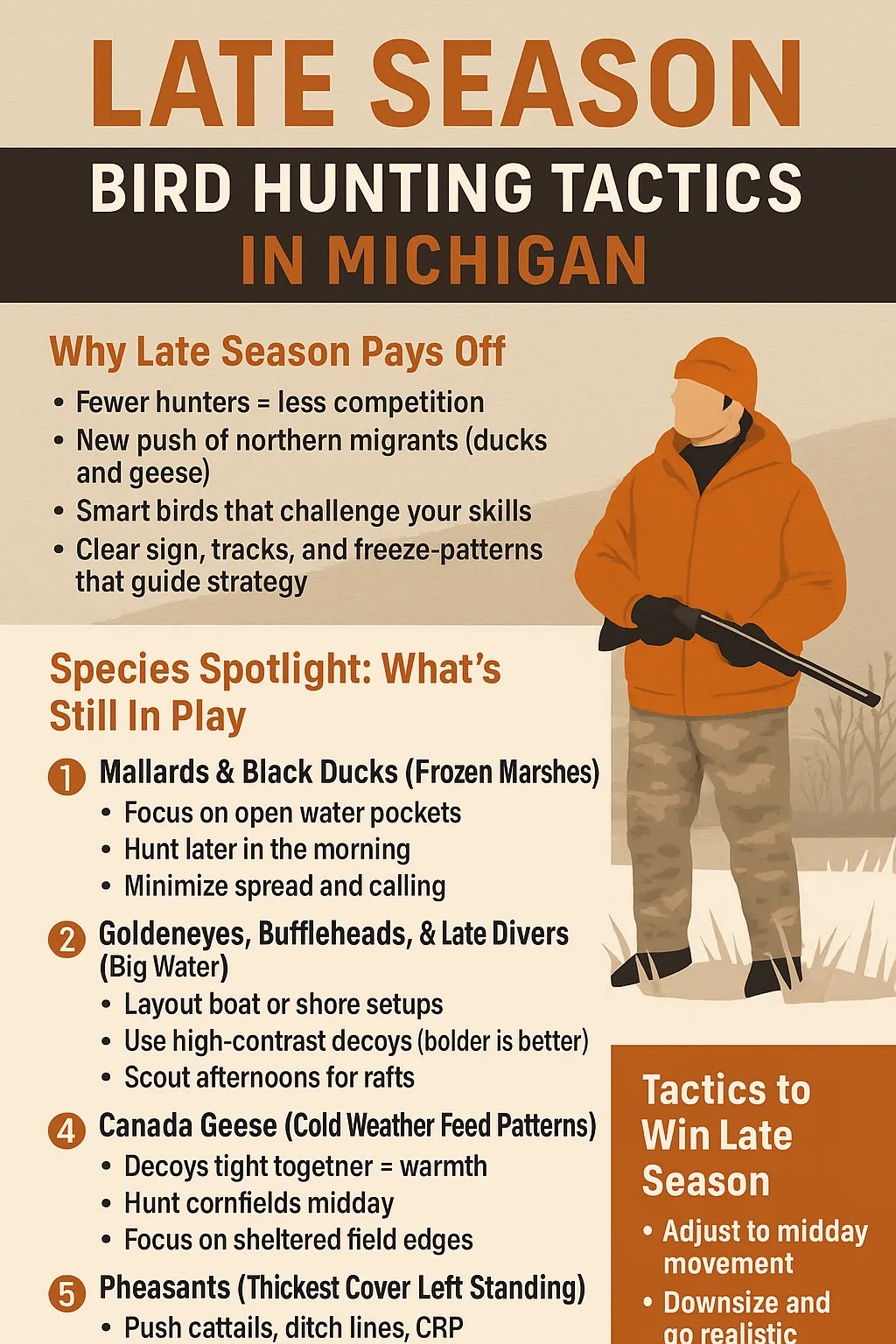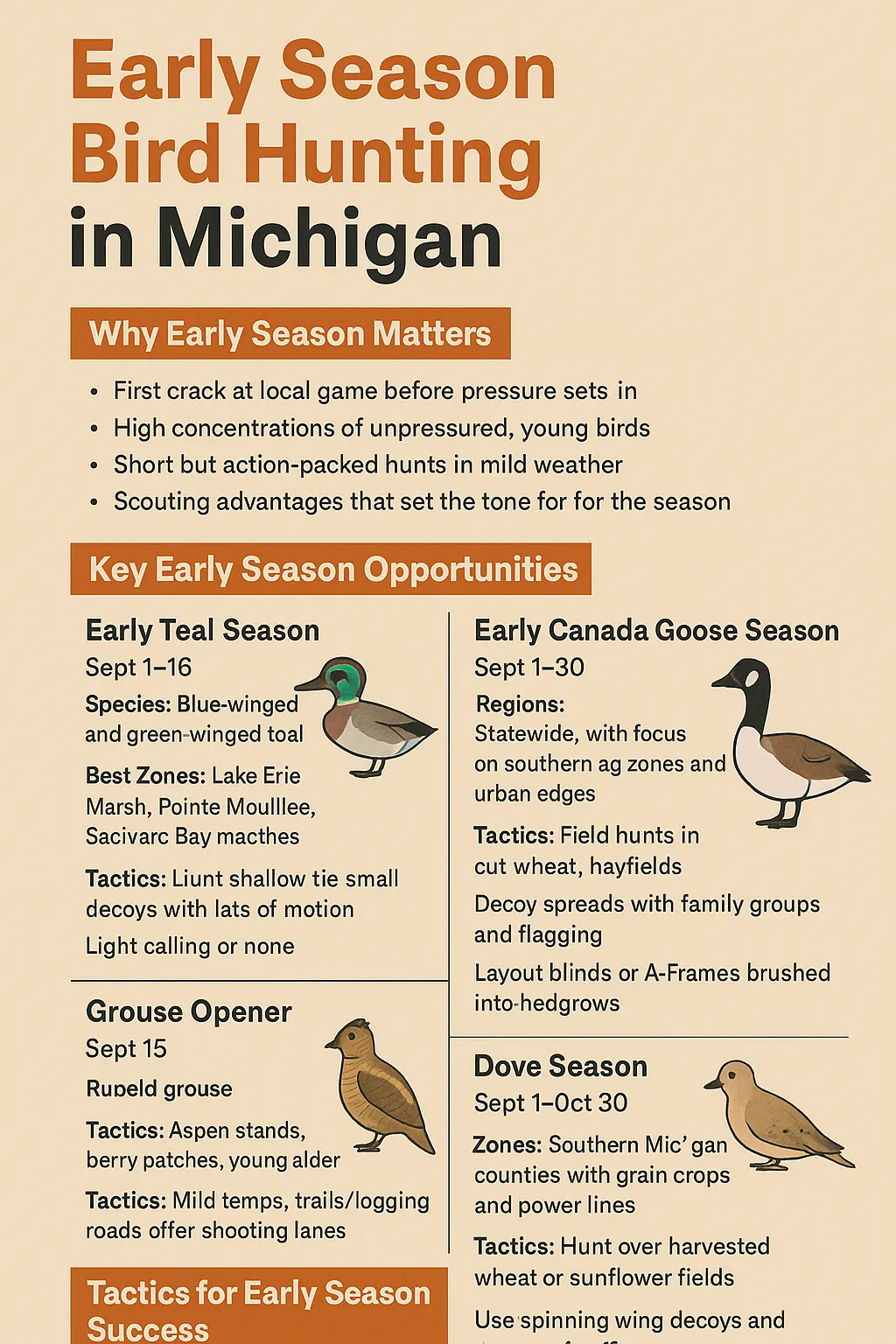
Woodcock Hunting in Michigan
Each fall, Michigan’s hardwood swales and alder runs echo with the whistling wings of the American Woodcock—also affectionately known as the “timberdoodle.” More than just an odd little bird, the woodcock is a prized quarry for upland hunters who know that in the world of autumn bird hunting, subtlety is king.
Why Woodcock?
Nicknamed “the little prince of the thickets,” the American Woodcock offers:
-
Low, jinking flight through dense brush
-
Rich table fare with a delicate, earthy flavor
-
A short, migratory season that rewards precision
-
A mystical woodland hunt experience tied to moon cycles and migration flows
Top Michigan Woodcock Regions
1. Upper Peninsula (U.P.)
-
Best covers: young alder stands, moist lowlands, edges of tag alder swamps
-
Hotspots: Ottawa National Forest, eastern Hiawatha National Forest
-
Bonus: Overlap with grouse habitat = double the action
2. Northern Lower Peninsula
-
Counties: Alcona, Alpena, Montmorency
-
Prime locations: Pigeon River Country, Rifle River State Recreation Area
-
Timing note: Peak flights often coincide with cold fronts in mid-October
3. Migration Stopover Pockets
-
Scattered but productive
-
Best bets: Riparian zones and moist, brushy coverts close to open fields
-
Pro tip: Look for earthworm-rich soils—woodcock feeding grounds
Tactics for Woodcock Success
Scouting Flight Paths
-
Watch weather: southbound flights follow cold fronts
-
Locate moist, loose soils for probing
-
Identify alder runs with open lanes between saplings
With or Without a Dog
-
With Dog: A close-working pointer is ideal—woodcock sit tight
-
Without Dog: Shuffle and pause method—move slow, let birds reveal themselves
Best Time to Hunt
-
Early Season (late Sept–early Oct): Resident birds, heavy foliage
-
Flight Season (mid–late Oct): Migrants arrive in waves—timing is everything
-
Late Season (Nov): Cold snaps push birds south—quick action required
Gear Essentials
| Gear | Why It Matters |
|---|---|
| Short-barreled 20- or 28-gauge | Easy to swing in tight timber |
| Waterproof boots | Woodcock love damp, swampy habitat |
| Lightweight vest or pack | Mobility matters in boggy terrain |
| GPS app with migration overlays | Track fronts and known woodcock coverts |
| Blaze orange hat & vest | Required and recommended for safety |
Pro Tips from Local Hunters
-
“Slow your step. Woodcock sit tighter than grouse—give them time.”
-
“If you flush one, expect more nearby. They bunch up during migration.”
-
“Hunt after a full moon and north wind—prime flight conditions.”
Conservation Corner
The American Woodcock’s future depends on:
-
Maintenance of early successional forest and moist bottomlands
-
Responsible timber harvests and brushland management
-
Migratory bird research and tracking initiatives
Support efforts through:
-
American Woodcock Society (AWS)
-
Michigan DNR Wildlife Habitat Grants
-
Young forest restoration partnerships
Conclusion: A Hunt in Tune with the Seasons
Woodcock hunting in Michigan isn’t just about bagging birds—it’s about tuning into the rhythms of the land, the skies, and the hush of fallen leaves underfoot. With only a few short weeks each fall, the timberdoodle demands a hunter’s full attention and rewards those who move softly, listen closely, and understand the subtle cues of the natural world. Whether you’re following the peep of a pointing dog or kicking through low thickets on your own, this is a pursuit defined by quiet satisfaction and fleeting beauty.
“Woodcock don’t wait. They whisper their presence, then vanish. A hunter tuned to their rhythm learns not to chase, but to flow with the season.”
Leave A Comment
Related Posts
Late Season Bird Hunting Tactics in Michigan The leaves have […]
Early Season Bird Hunting in Michigan Before the frost settles […]








